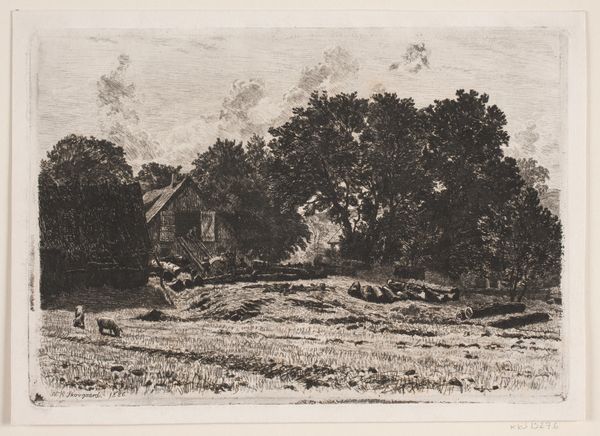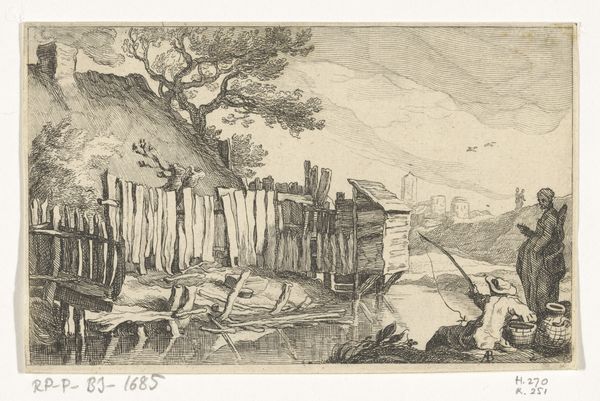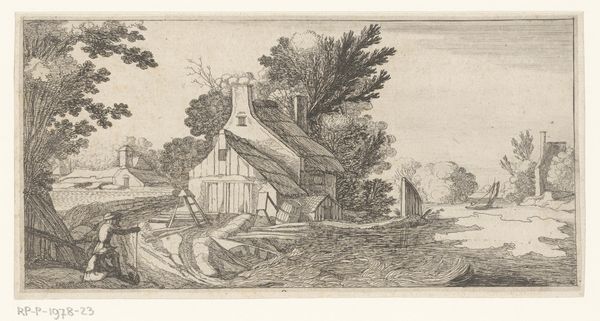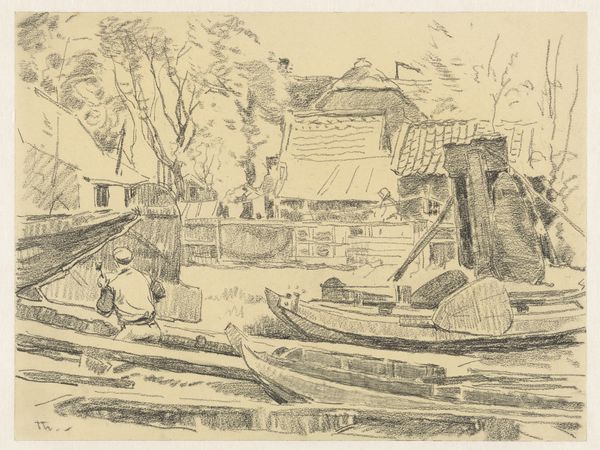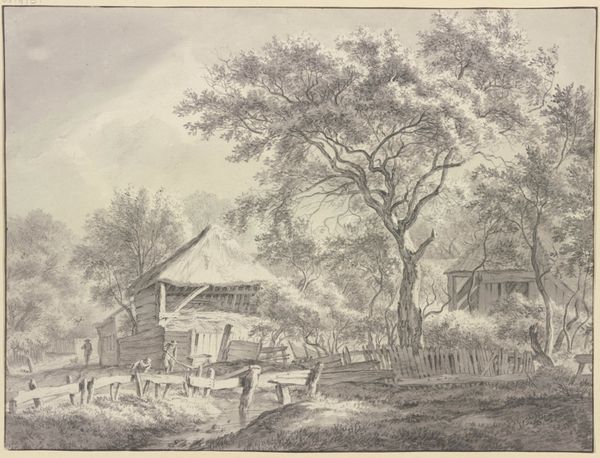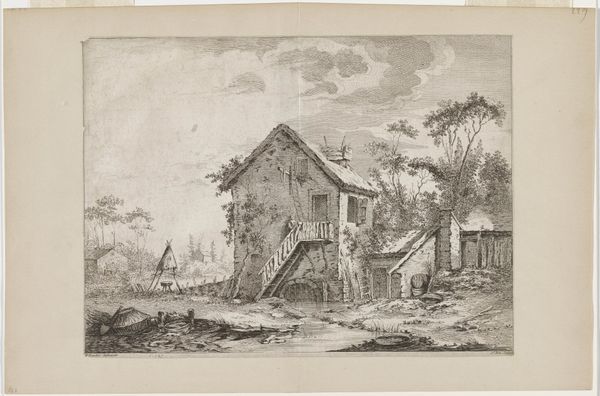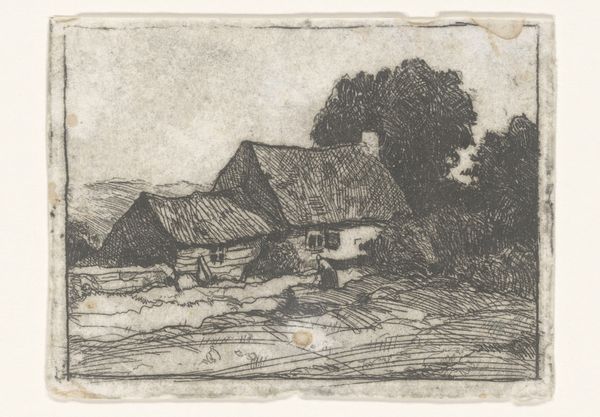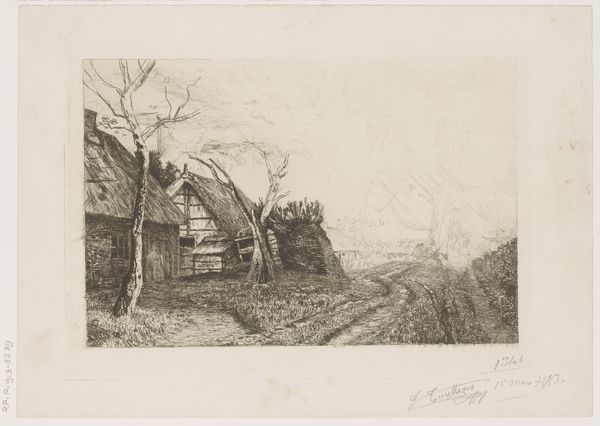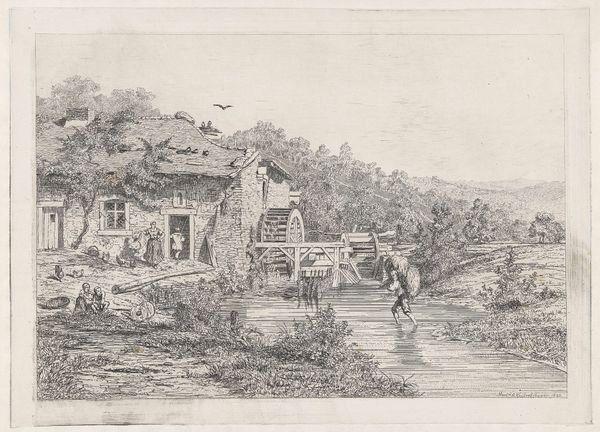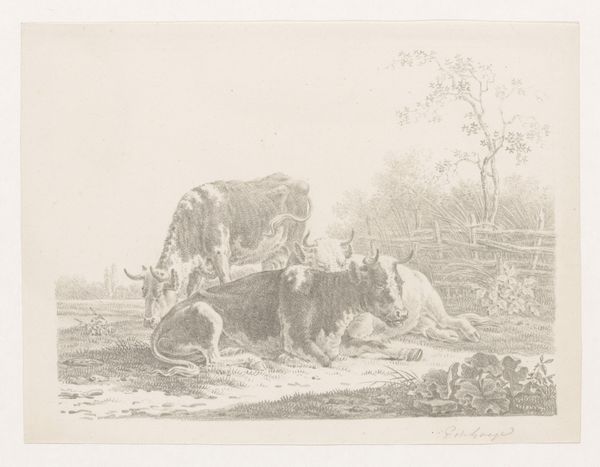
drawing, pencil
#
drawing
#
pencil sketch
#
landscape
#
pencil
#
realism
Dimensions: height 360 mm, width 517 mm
Copyright: Rijks Museum: Open Domain
Curator: Looking at "Dorp aan het water," or "Village on the Water," rendered in pencil by Otto Hanrath in 1924, one can discern the detailed capture of a Dutch waterside scene. Editor: Immediately, I’m struck by how muted the tone is—almost melancholy, yet undeniably peaceful. There’s a simplicity to the scene. Curator: That perceived simplicity perhaps obscures Hanrath’s insightful documentation of Dutch rural life, at a very specific intersection of economics, land usage, and traditional practices. We can interpret this image as a visual text speaking about labor divisions in Dutch society at that time, revealing how agricultural and transport modes impact people's everyday experiences, including the natural environment that makes such work both essential and sustainable. Editor: That’s fascinating! I immediately noted the symbolic significance of the village church tower as it juxtaposes against the everyday pragmatism suggested by the boat, carriage, and domestic animals: markers of continuity and memory and an echo of tradition in an era experiencing seismic changes in both art and societal structure. But the very structure of these man-made constructs and animals would lead back to something that affects women's place in the household—especially rural life at that period. Curator: Precisely, which raises important questions about whose labor enabled such stability. Hanrath is pointing to a social order rooted in unequal opportunities. But, speaking about those continuities and traditions, that interplay also mirrors the enduring human capacity for adapting nature for communal goals versus potentially harmful means of production. Editor: Absolutely! It acts almost like a visual chronicle, offering glimpses into past lives. Perhaps it speaks not just about that Dutch village but about all those small places whose symbols help ground our sense of collective identity through historical periods. Curator: It shows us how intertwined art, historical narrative, and individual stories always will be—revealing how important artworks are to opening discussions around often untold or glossed-over aspects of our collective history, reminding us that representation—who gets depicted, how, and why—matters deeply when constructing lasting and accessible cultural memory. Editor: The way he draws us in confirms, for me, art's amazing capability to both capture fleeting moments and resonate through centuries of human experience. Curator: I'm left contemplating how this image is very complex, reflecting its era’s struggles to achieve any ideal balance within human endeavors and within our physical world.
Comments
No comments
Be the first to comment and join the conversation on the ultimate creative platform.
